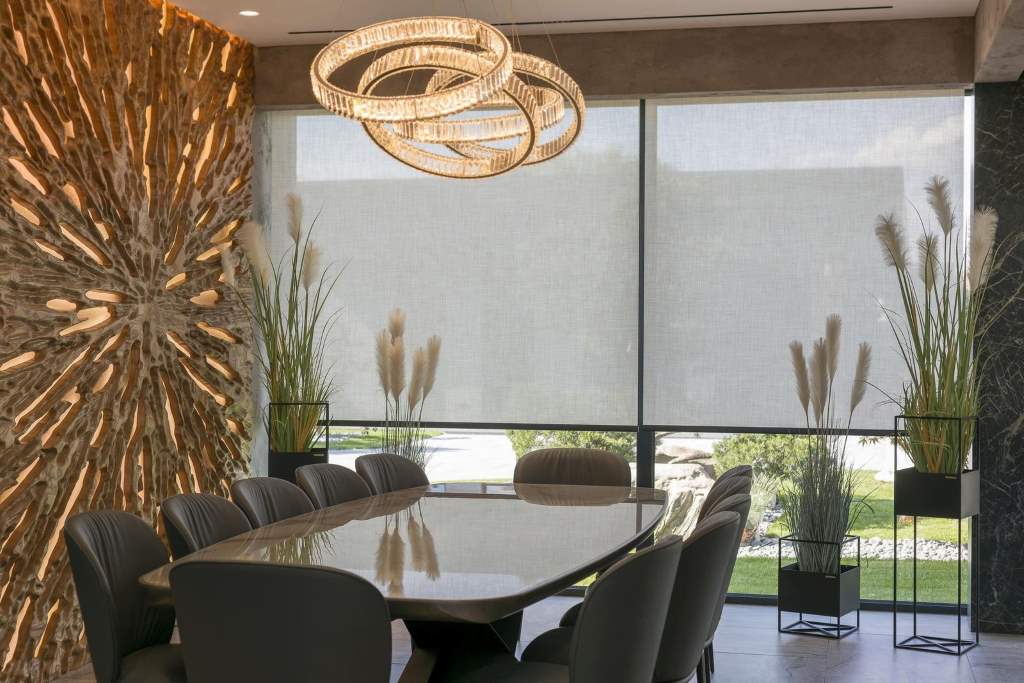
The Future Technology of Home Automation: Exploring the Role of Automatic Blinds
In the ever-evolving landscape of technological advancements, home automation stands out as a beacon of convenience, efficiency, and innovation.
From smart thermostats to voice-controlled assistants, the modern home is becoming increasingly interconnected and intelligent. At the heart of this revolution lies the seamless integration of various technologies aimed at enhancing comfort, security, and energy efficiency.
Understanding Home Automation Technology
Before delving into the specific role of automatic blinds, it’s crucial to grasp the fundamentals of home automation technology. At its core, home automation relies on a network of interconnected devices and sensors that communicate with each other to perform predetermined tasks autonomously or in response to user commands.
These devices can range from simple light bulbs to complex surveillance systems, all controlled and monitored through a centralized hub or smartphone app. Home automation technology has seen significant advancements in recent years, driven by innovations in wireless communication protocols, sensor technology, and artificial intelligence.
This convergence of technologies has enabled the creation of intelligent environments where homes can anticipate and respond to the needs of their occupants, enhancing comfort, convenience, and security.
The Rise of Automatic Blinds in Home Automation
Automatic blinds represent a significant innovation within the realm of home automation, offering homeowners unparalleled convenience and control over their indoor environment. These intelligent window coverings utilize motorized mechanisms to open, close, or adjust the position of blinds or shades automatically.

By integrating seamlessly with existing smart home ecosystems, automatic blinds enhance comfort, privacy, and energy efficiency while complementing the overall aesthetics of the living space. The adoption of automatic blinds has been driven by several factors, including the growing demand for energy-efficient solutions, the increasing prevalence of smart home technology, and the desire for greater convenience and comfort.
With automatic blinds, homeowners can effortlessly regulate natural light levels, maintain privacy, and reduce energy consumption, all while enjoying the convenience of remote operation and intelligent automation.
Technology Behind Automatic Blinds
The technology powering automatic blinds encompasses a combination of hardware and software components designed to deliver precise and reliable performance. Motorized actuators, controlled by microprocessors or smart controllers, enable smooth operation and precise positioning of the blinds.
Meanwhile, sensors such as light sensors, temperature sensors, and motion detectors provide valuable data for automated adjustments based on environmental conditions and user preferences.
One of the key tech innovations driving the advancement of automatic blinds is the integration of wireless communication protocols such as Wi-Fi, Zigbee, and Z-Wave. These protocols enable seamless connectivity with other smart home devices and allow users to control their blinds remotely via smartphone apps or voice commands.
Additionally, advancements in motor technology, including brushless DC motors and silent operation mechanisms, have improved the performance and reliability of automatic blinds while reducing noise and energy consumption.
Benefits of Automatic Blinds
The adoption of automatic blinds offers a myriad of benefits for homeowners seeking to optimize their living spaces.
- Beyond the obvious convenience of remote operation via smartphone apps or voice commands, automatic blinds contribute to energy conservation by regulating natural light and heat entering the home.
- Additionally, they enhance privacy and security by allowing users to schedule blind movements or simulate occupancy while away from home, deterring potential intruders.
- Automatic blinds also offer enhanced comfort and convenience by providing precise control over the amount of light entering a room and reducing glare and UV exposure. This not only creates a more pleasant and comfortable indoor environment but can also help protect furniture, flooring, and artwork from sun damage.
- Furthermore, automatic blinds can be integrated with other smart home devices such as thermostats and lighting systems to create custom automation routines tailored to the homeowner’s lifestyle and preferences.
Integration with Smart Home Ecosystems
Whether it’s compatibility with popular platforms like Amazon Alexa, Google Assistant, or Apple HomeKit, or interoperability with other smart devices such as smart thermostats and lighting systems, automatic blinds enhance the overall synergy and functionality of the connected home.

This integration enables users to create custom automation routines and scenarios tailored to their lifestyle and preferences. By integrating automatic blinds with other smart home devices, homeowners can create more intelligent and responsive environments that adapt to their needs and preferences.
For example, automatic blinds can be programmed to adjust based on the time of day, the position of the sun, or the occupancy of a room, helping to optimize energy usage and enhance comfort. Additionally, automatic blinds can be integrated with home security systems to provide an extra layer of protection, automatically closing when the system is armed or in response to motion detected outside the home.
Future Trends and Innovations
As technology continues to advance at a rapid pace, the future of automatic blinds holds exciting possibilities for further innovation and refinement. Emerging trends such as AI-powered automation, advanced sensor technologies, and decentralized control systems promise to elevate the capabilities and performance of automatic blinds to new heights.
One of the most promising areas of innovation in automatic blinds is the integration of artificial intelligence and machine learning algorithms. By analyzing data from sensors and user interactions, AI-powered automatic blinds can learn and adapt to the preferences and habits of the occupants, automatically adjusting their behavior to optimize comfort and energy efficiency.
For example, automatic blinds could learn to anticipate when a room is typically occupied or when the sun is likely to cause glare, adjusting their position accordingly without the need for manual intervention. Furthermore, advancements in sensor technology are enabling automatic blinds to become more responsive and adaptive to changing environmental conditions.
For example, advanced light sensors can measure not only the intensity of light but also its color temperature, allowing automatic blinds to adjust their position to maintain optimal lighting conditions for different activities such as reading, watching TV, or working on a computer. Similarly, temperature and humidity sensors can provide valuable data for controlling blinds based on indoor climate conditions, helping to regulate temperature and improve comfort.

Conclusion
The future of home automation is undeniably bright, with automatic blinds playing a pivotal role in shaping the intelligent homes of tomorrow. By harnessing the power of technology to enhance comfort, convenience, and sustainability, automatic blinds empower homeowners to create living spaces that are both functional and aesthetically pleasing.
As we continue to push the boundaries of innovation, the possibilities for automation and integration are endless, promising a future where homes truly work for us, effortlessly adapting to our needs and preferences.
With continuous advancements in technology and design, automatic blinds are poised to become an indispensable component of the modern smart home, offering unparalleled comfort, convenience, and control to homeowners around the world.


